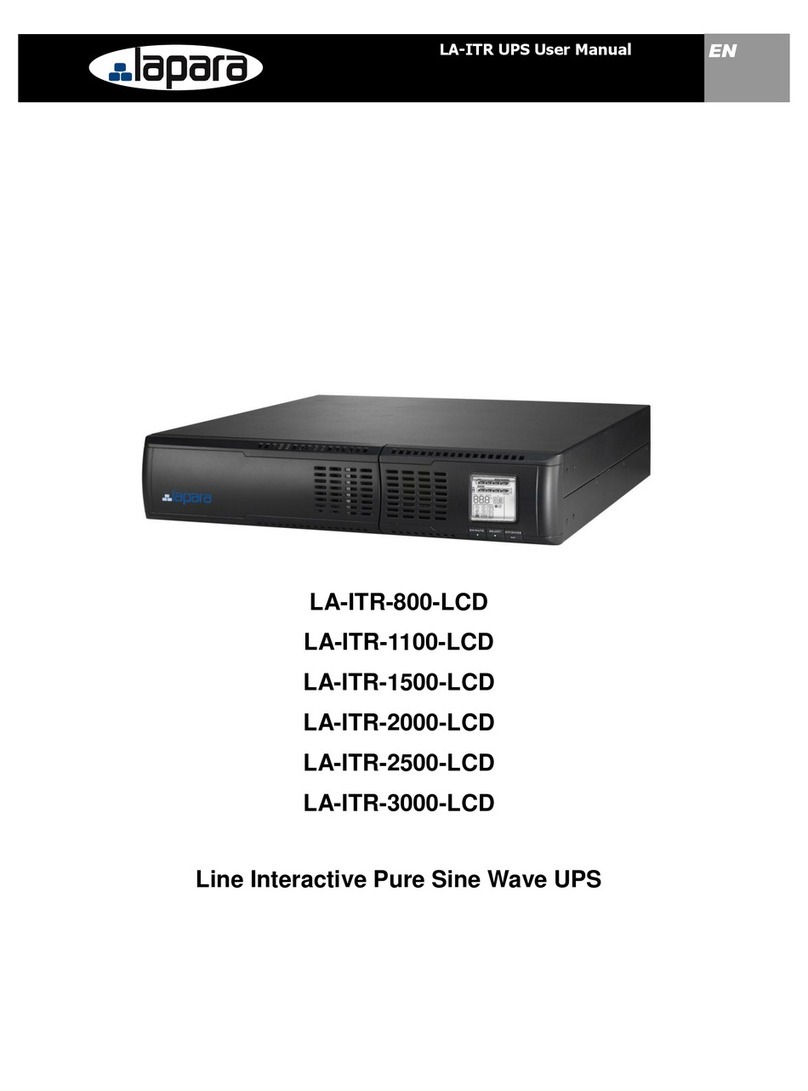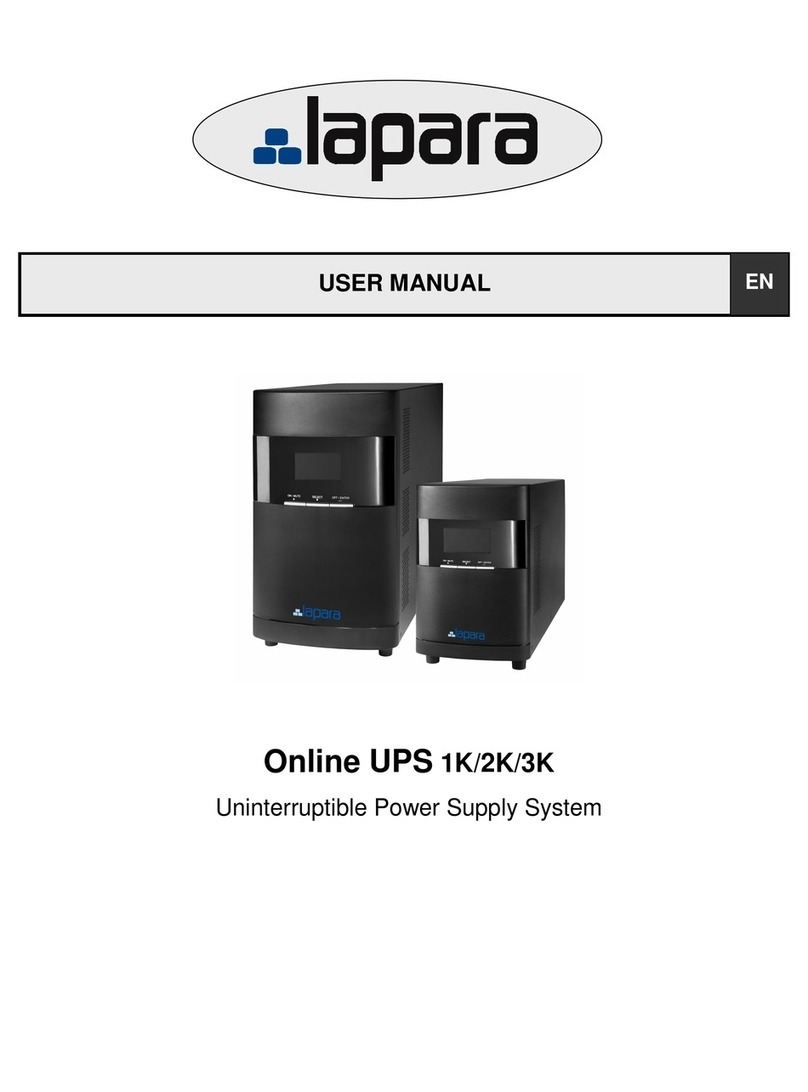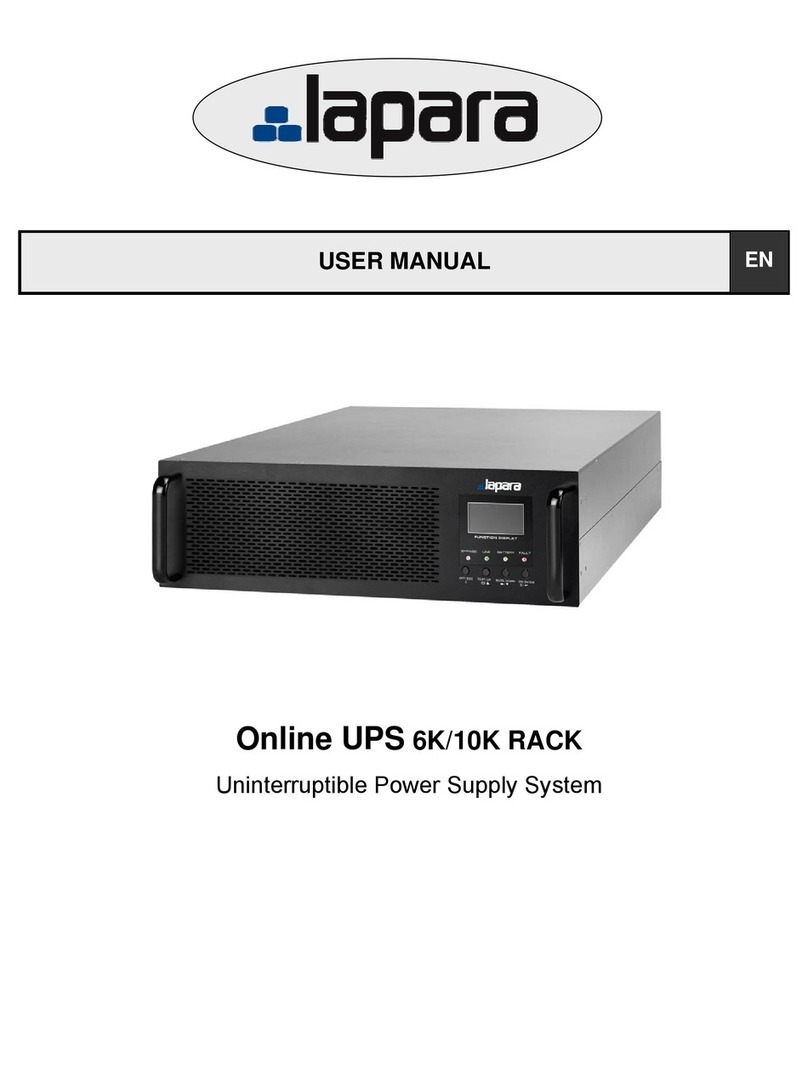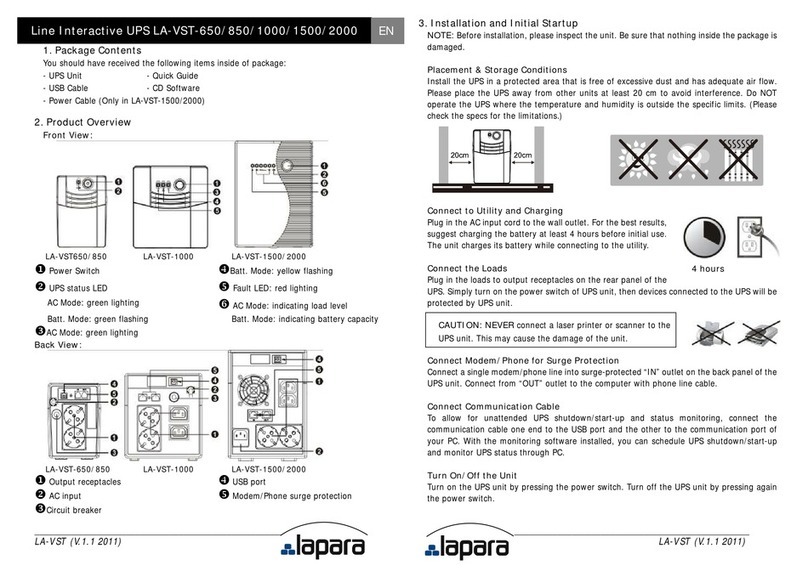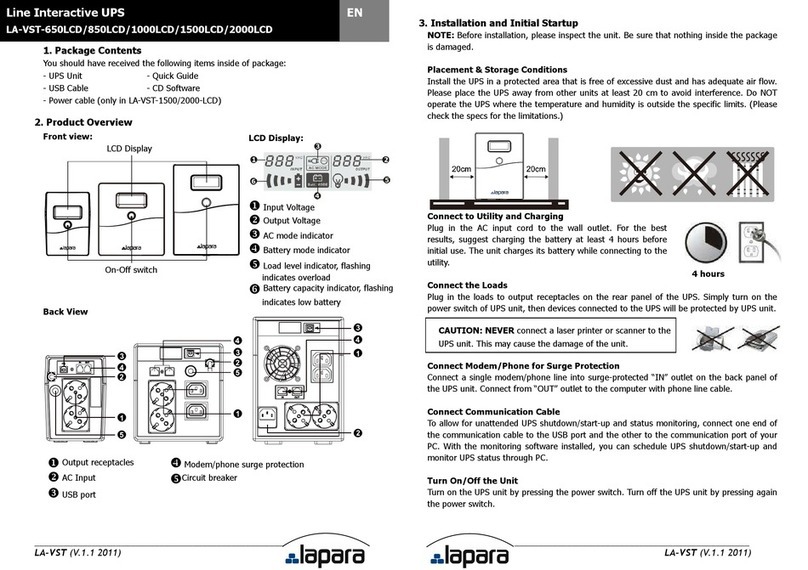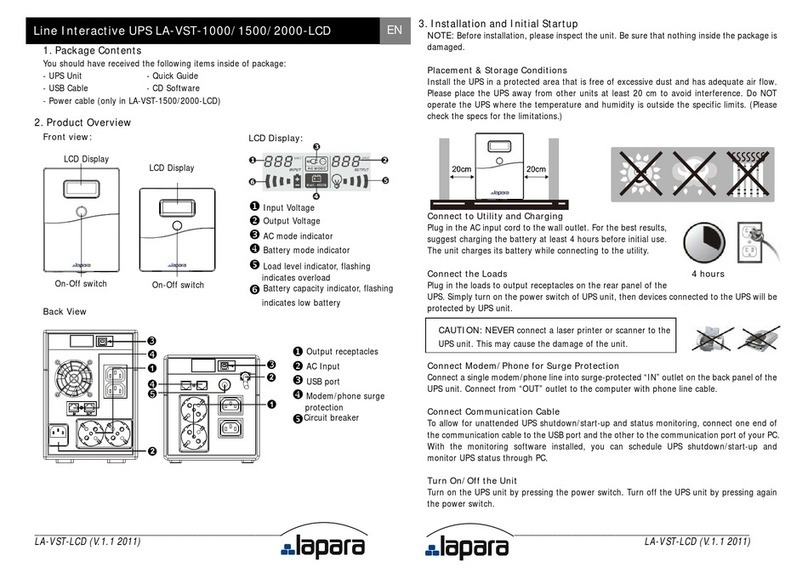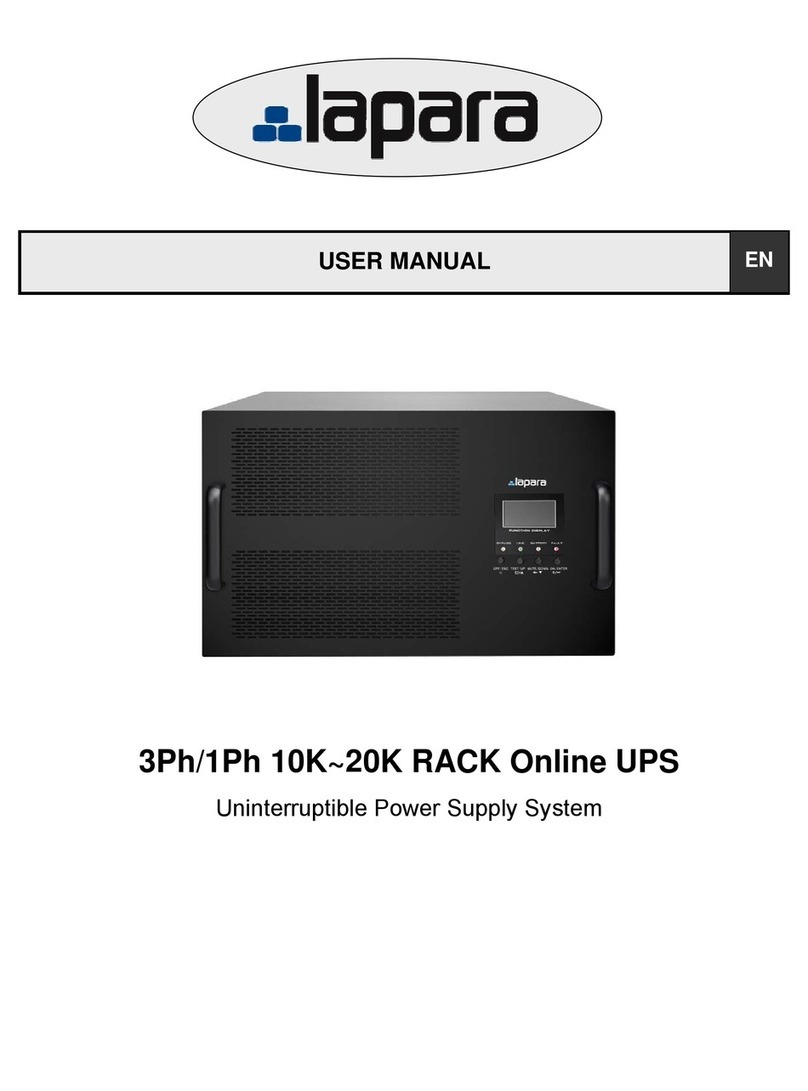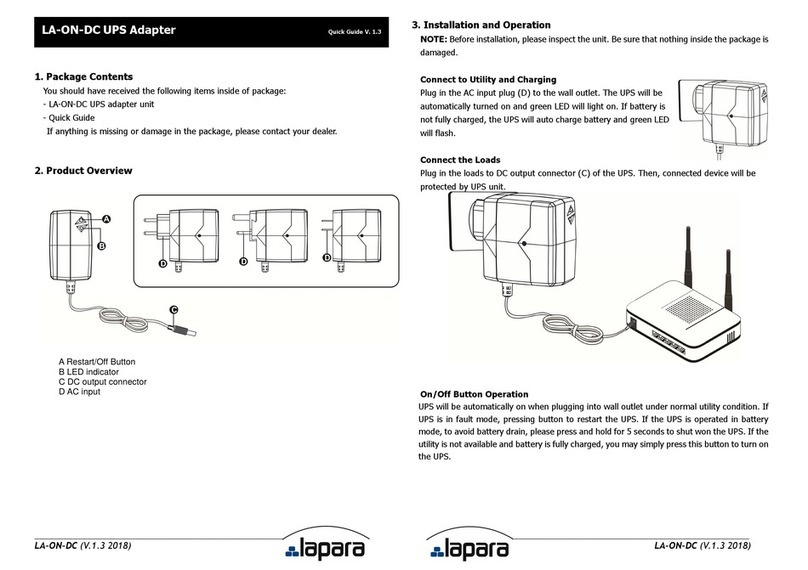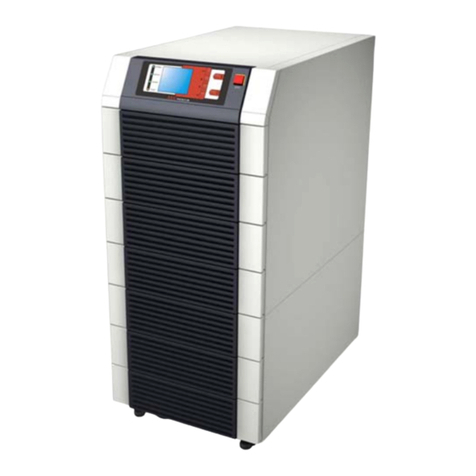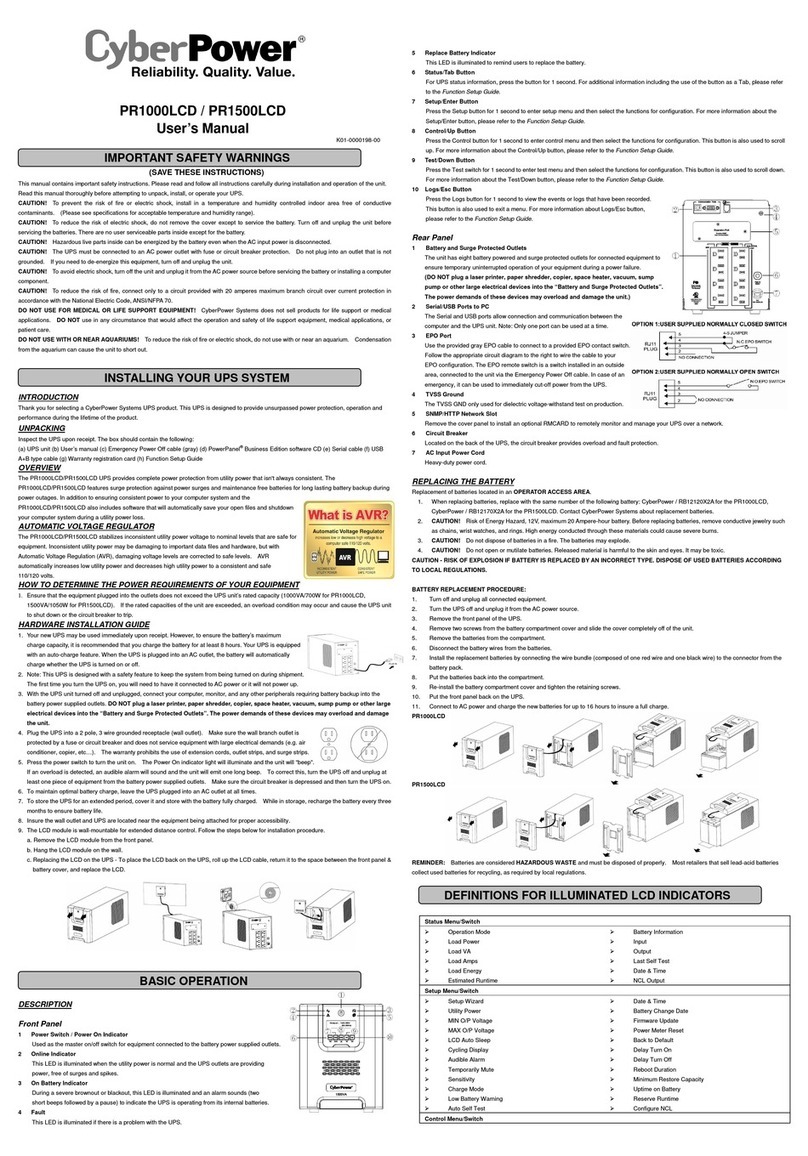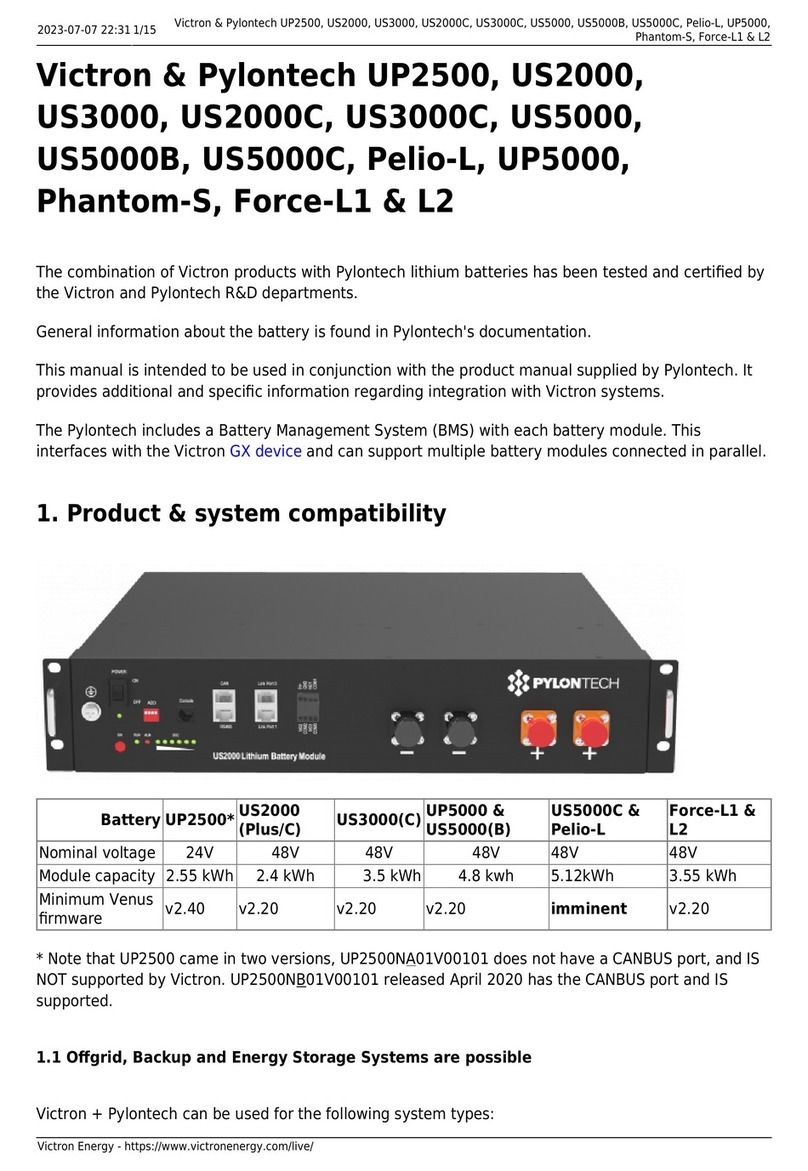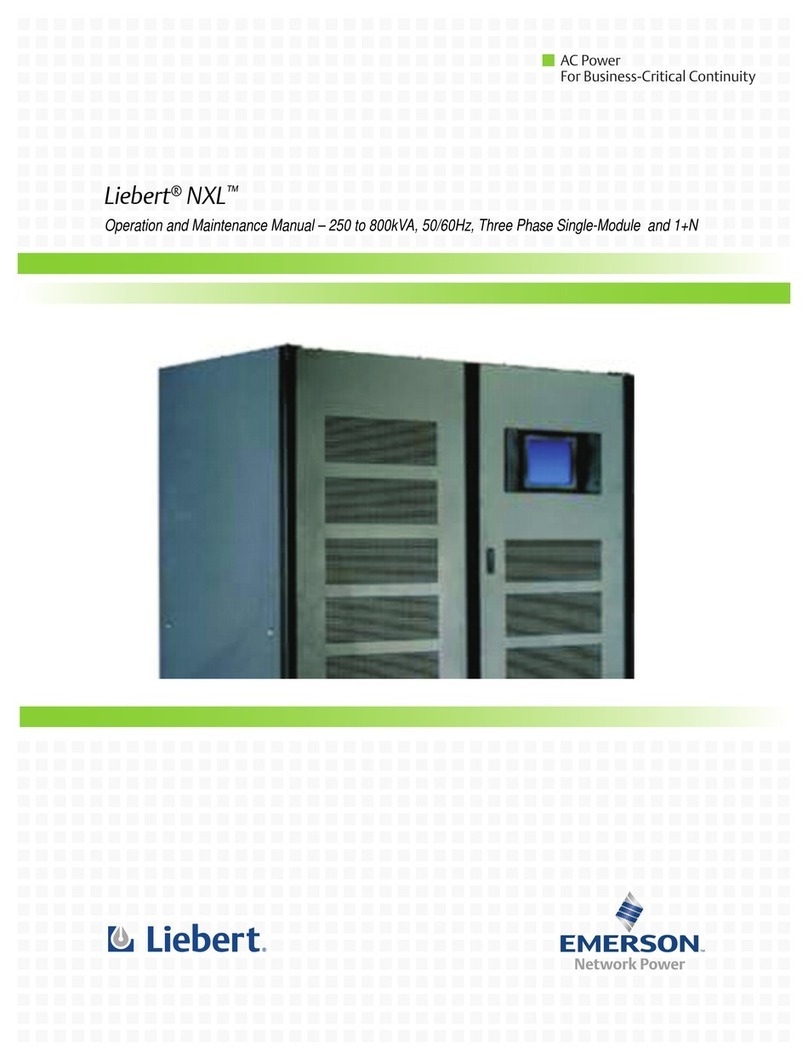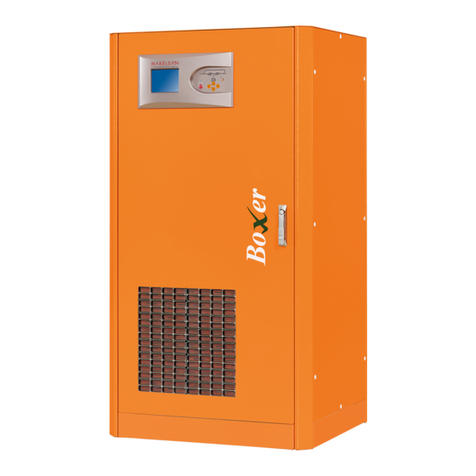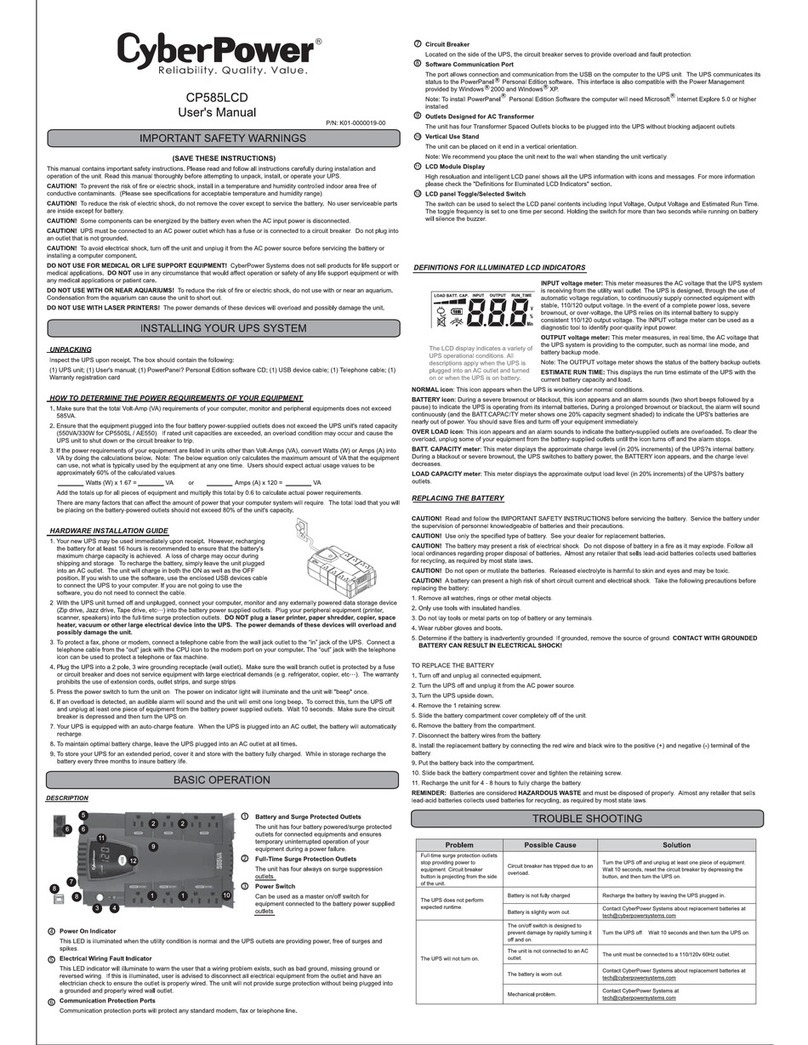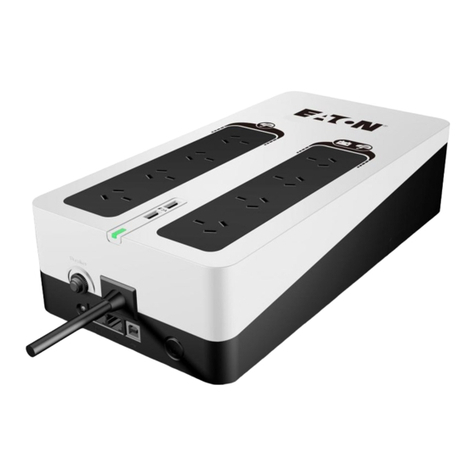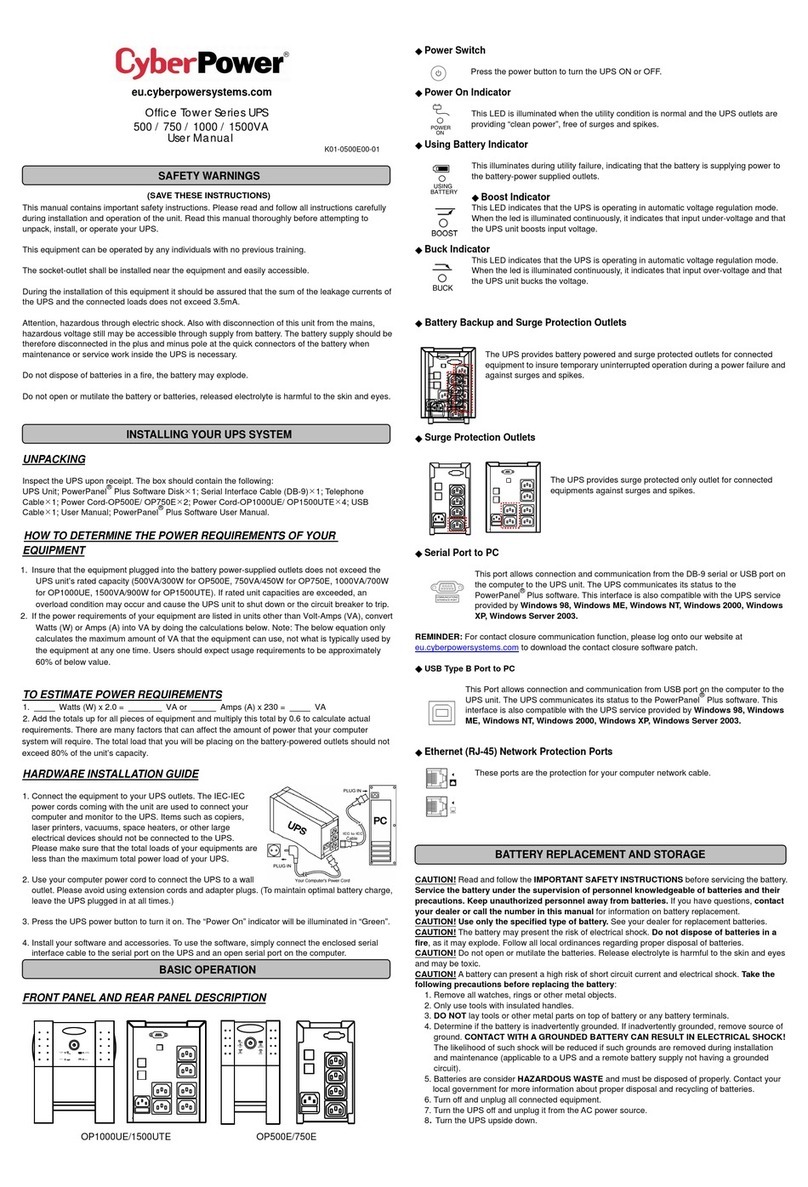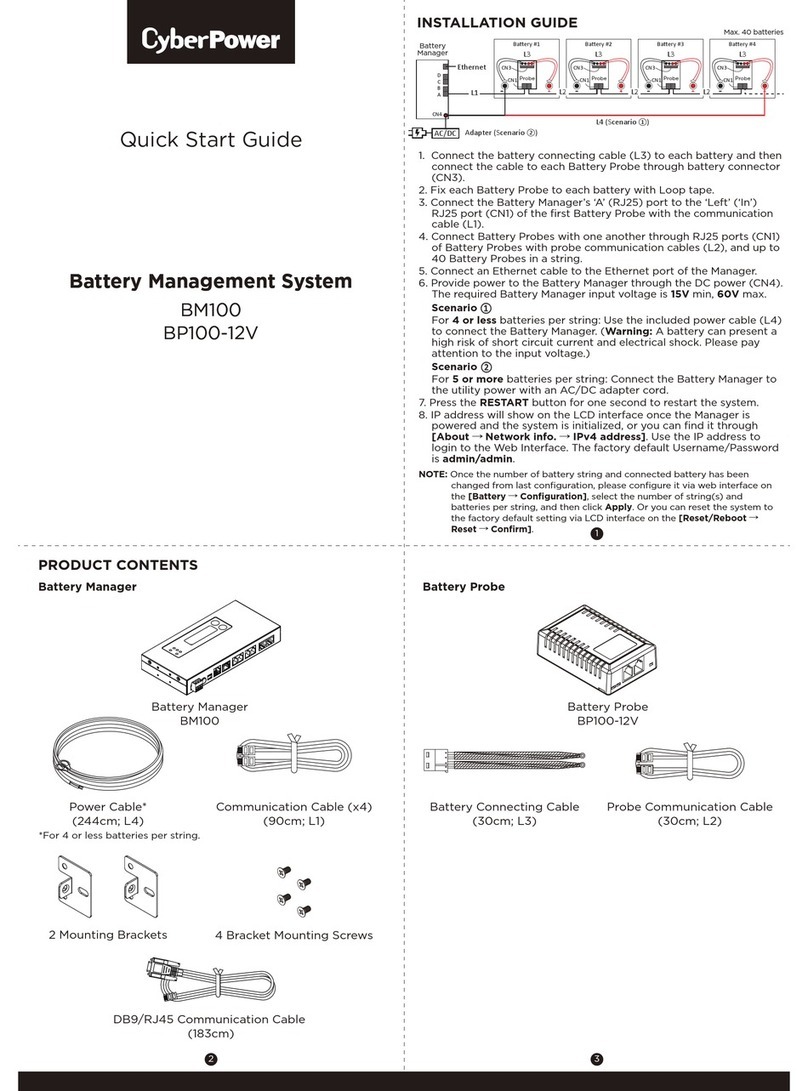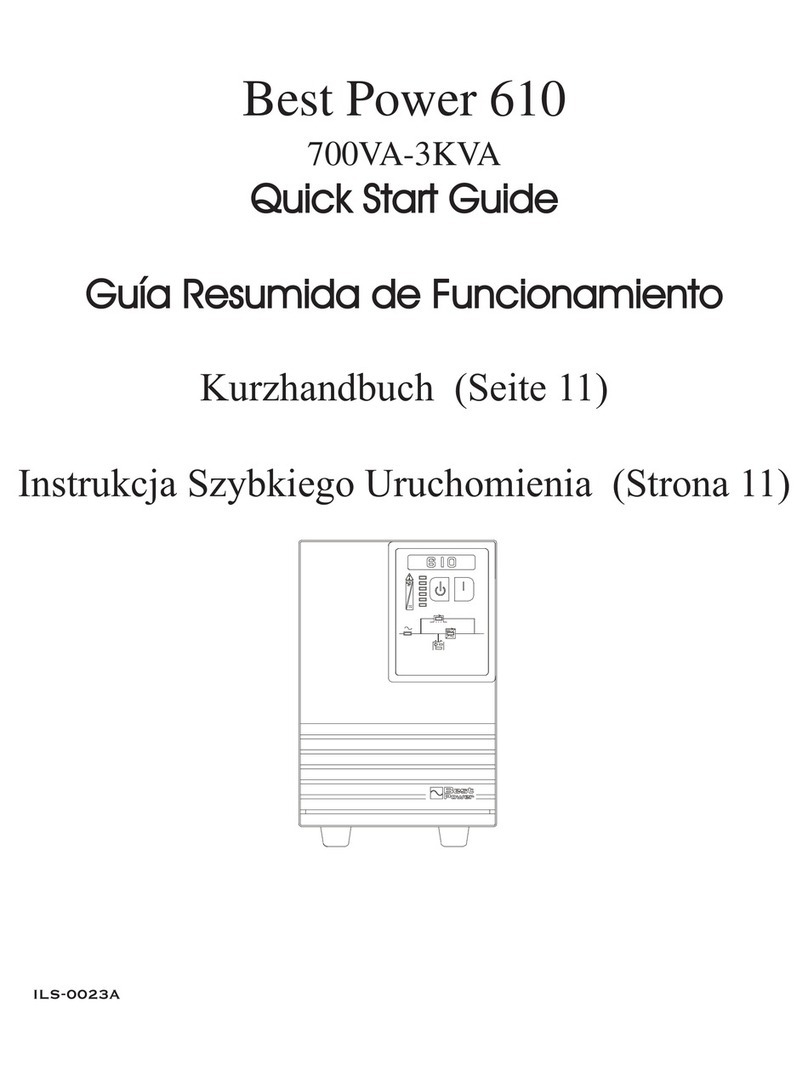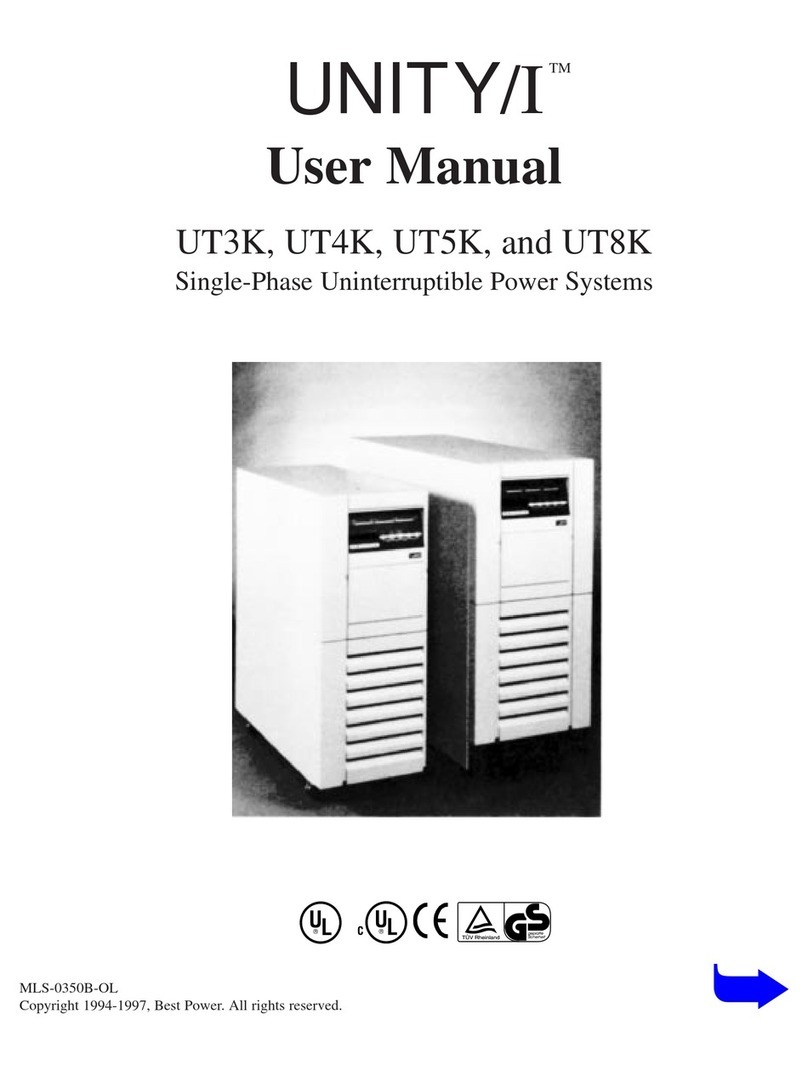
5
negative pole of battery pack to negative pole of external battery connector in UPS. Polarity
misconnection will cause UPS internal fault. It’s recommended to add one breaker between
positive pole of battery pack and positive pole of external battery connector in UPS to prevent
damage to battery packs from internal fault.
The required specification of breaker: voltage ≧1.25 x battery voltage/set; current ≧50A
Please choose battery size and connected numbers according to backup time requirement
and UPS specifications. To extend battery lifecycle, it’s recommended to use them in the
temperature range of 15ºC to 25ºC.
Step 1: External battery connection (for long-run models only)
Follow below chart to make external battery connection.
Step 2: UPS input connection
Plug the UPS into a two-pole, three-wire, grounded receptacle only. Avoid using extension
cords.
For 208/220/230/240VAC models: The power cord is supplied in the UPS package.
For 110/115/120/127VAC models: The power cord is attached to the UPS. The input plug
is a NEMA 5-15P for 1K and 1K-L models, NEMA 5-20P for 2K and 2K-L models.
Note: For Low voltage models: Check if the site wiring fault indicator lights up in LCD panel. It
will be illuminated when the UPS is plugged into an improperly wired utility power outlet (Refer
to Troubleshooting section).
Step 3: UPS output connection
For socket-type outputs, there two kinds of outputs: programmable outlets and general
outlets. Please connect non-critical devices to the programmable outlets and critical
devices to the general outlets. During power failure, you may extend the backup time to
critical devices by setting shorter backup time for non-critical devices.
For terminal-type input or outputs, please follow below steps for the wiring configuration:
a) Remove the small cover of the terminal block
b) Suggest using AWG14 or 2.1mm
2
power cords. Suggest using AWG12-10 or
3.3mm
2
-5.3mm
2
power cords for NEMA type.
c) Upon completion of the wiring configuration, please check whether the wires are
securely affixed.
d) Put the small cover back to the rear panel.
Step 4: Communication connection
Communication port:
USB port RS-232 port Intelligent slot
